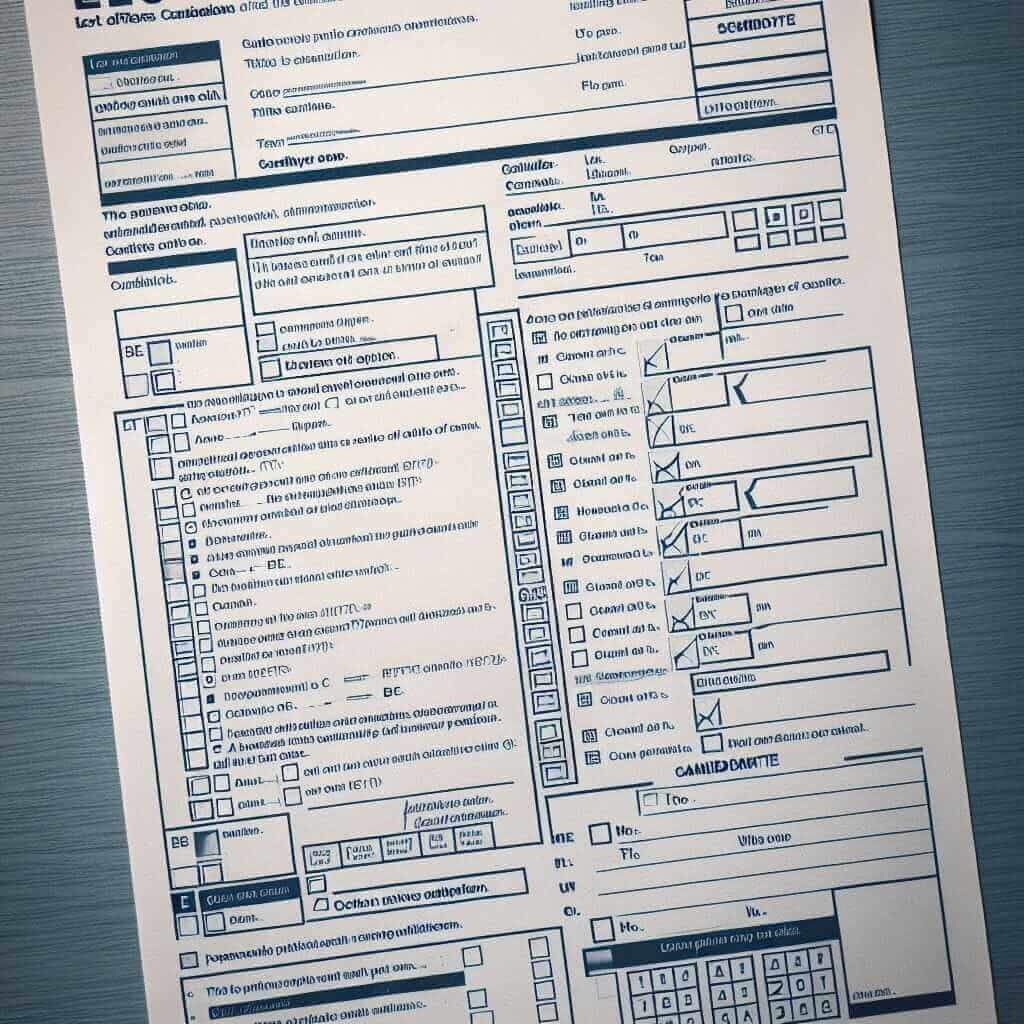As an IELTS instructor with over 20 years of experience, I understand the importance of getting every detail right on the IELTS, including accurately filling in the answer sheet. This seemingly simple task can be a source of anxiety for test-takers, but it doesn’t have to be. This guide will provide a clear, step-by-step approach to ensure you confidently and correctly fill in your IELTS answer sheet, maximizing your chances of achieving your desired band score.
Understanding the IELTS Answer Sheet
The IELTS answer sheet is standardized, and regardless of whether you are taking the IELTS Academic or IELTS General Training test, the format remains consistent. Familiarity with the answer sheet is crucial to avoid any confusion or mistakes during the actual exam.
Sections of the IELTS Answer Sheet
The IELTS answer sheet is divided into sections for each module of the test:
- Listening: This section includes spaces to write your answers for all 40 questions.
- Reading: Similar to the listening section, you will find spaces designated for your answers to the 40 reading questions.
- Writing: This section provides lined spaces for your writing tasks. Remember, space is limited, so plan your writing accordingly.
- Speaking: The speaking test does not use an answer sheet. Your responses are recorded and assessed separately.
How to Fill in the IELTS Answer Sheet Correctly
Here’s a detailed breakdown of how to fill in each section of your IELTS answer sheet:
1. Personal Details
- Use a black or blue pen: Ensure you use a pen with black or blue ink, as these are the only colors accepted for marking the answer sheet.
- Print clearly: Write your full name, candidate number, test date, and other required details in CAPITAL letters. Accuracy is key here, as any errors could lead to complications.
- Use correct spelling: Double-check your spelling to avoid any issues with identification.
2. Answering Questions
- Follow instructions carefully: Each section will have specific instructions. For instance, in the listening and reading sections, pay close attention to whether you need to write a letter, a number, a word, or a phrase.
- Stay within the boxes: Write your answers within the allocated boxes. If you need to make a correction, neatly cross out the incorrect answer and clearly write the new one.
- Don’t leave blanks: Even if you’re unsure of an answer, make your best guess. There is no negative marking on the IELTS, so it’s always better to attempt every question.

Examples from Real IELTS Tests
Let’s look at some examples of how to answer different question types:
Multiple Choice (Listening & Reading): For these questions, you’ll typically need to choose the correct letter (A, B, C, or D). Clearly mark your chosen answer within the box provided.
Sentence Completion (Listening & Reading): Carefully transfer your answer from the question booklet to the answer sheet, ensuring correct spelling and grammar.
Short Answer (Reading): Write a short phrase or sentence from the text to answer the question. Be sure to stay within the word limit.
Tips for Success
Here are some additional tips for correctly filling in your IELTS answer sheet:
- Practice makes perfect: Before your test day, download and print practice answer sheets from the official IELTS website. This will help you become familiar with the layout and feel more comfortable during the exam.
- Time management is key: During the exam, manage your time effectively. Don’t spend too long on a single question. If you’re struggling, move on and come back to it if you have time left.
- Check your work thoroughly: If you finish a section early, use the remaining time to carefully review your answers, ensuring accuracy and legibility.
Conclusion
Mastering the art of filling in your IELTS answer sheet correctly is a crucial step toward achieving your desired band score. By following the steps outlined in this guide, practicing beforehand, and approaching the exam with a calm and focused mindset, you’ll be well-equipped to confidently tackle this aspect of the IELTS. Remember, meticulous preparation is the key to success. Good luck!